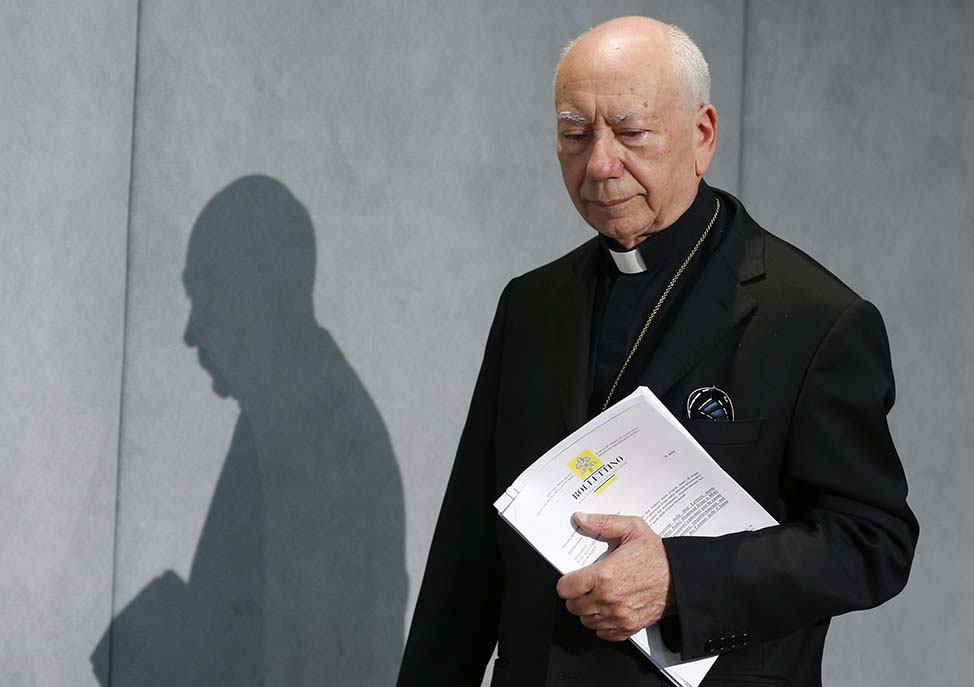Dear Father, Pope Francis recently announced new procedures to make marriage nullity cases quicker and more affordable. What are the changes and do they really safeguard marriage?
The new procedures, which take effect on 8 December this year, the first day of the Jubilee Year of Mercy announced by Pope Francis, are spelled out in the pope’s Apostolic Letters Mitis iudex Dominus Iesus (The Lord Jesus, meek judge) for the Latin Rite and Mitis et misericors Iesus (Meek and merciful Jesus) for the Eastern Churches.
I will comment on the former document.
As the pope explains at the beginning, the reform responds to a request from a majority of the bishops in the Extraordinary General Assembly of the Synod of Bishops which met in Rome in October 2014 calling for a quicker and more accessible process.

In response to the request Pope Francis appointed a commission to draft new norms headed by the Dean of the Roman Rota, the
Vatican’s tribunal which handles marriage cases.
Also on the commission was the President of the Pontifical Council for Legislative Texts. So the new norms are the work of some of the best canonists in the Church today.
The pope explains that the supreme norm of the salvation of souls and the principle of the indissolubility of marriage remain intact in the new regulations, which replace canons 1671-1691 of the 1983 Code of Canon Law.
Among the protections surrounding the marriage bond, as in the past, is the figure of the defender of the bond, who is to present all the possible arguments in favour of the validity of the marriage (cf. Can. 1676).
What is new in the process? One of the biggest changes is the provision that there need be only one judgment of nullity, unlike in the former process, where the declaration of nullity by the first tribunal had to be confirmed by a second appeals tribunal (cf. Can. 1679).
Nonetheless if one of the partners in the marriage, or the promoter of justice or defender of the bond, is not satisfied with the declaration of nullity they can still appeal against the judgment to a higher tribunal (cf. Can. 1680 §1).
Another big change is the provision, in addition to the ordinary process, of a “shorter process” when the nullity of the marriage is supported by particularly strong arguments.
The pope says he is aware that the shorter process might put at risk the indissolubility of the marriage, so he has determined that in those cases the diocesan bishop himself is to be the judge.
The shorter process can be used only when both partners in the marriage, or only one of them with the consent of the other, request the judgment of possible nullity of their marriage and there are circumstances which do not require a more thorough investigation and which render the nullity obvious (cf. Can. 1683).
The Procedural Regulations that accompany the Apostolic Letter give a list of possible circumstances that would allow the case to be judged via the shorter process.
Among them are the lack of faith in one or both parties to give full consent to a Catholic marriage, the brevity of their married life together, extramarital relations at the time of the wedding or shortly thereafter, the deceitful hiding of one’s sterility or of a serious contagious illness or of the existence of children from a previous relationship, etc. (cf. Art. 14 §1).
If the bishop, in coming to his judgment after consulting those who have drawn up the case, reaches moral certainty of the nullity of the marriage, he gives his judgment, which is final.
If he cannot reach this certainty he refers the case back to be decided by the ordinary process (cf. Can. 1687 §1).
In the ordinary process there are to be three judges, presided over by a cleric, or if this is not possible, one judge who must be a cleric (cf. Can. 1673 §§3-4). It is possible that the shorter process could be completed in as little as a few months.
The pope expresses the wish that, as far as possible, the partners not be charged anything for having their case heard, acknowledging that those working in the working must be paid.
So he has certainly made marriage cases simpler, quicker and more accessible to the faithful.
We give thanks to the Holy Father for giving the Church these new norms and we pray that those carrying them out will always
respect the truth of the marriage and the indissolubility of the bond.
